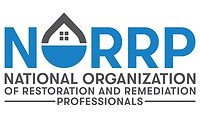Purdue's DRR Program: Where Are We Now?

Purdue University’s Department of Building Construction Management is a highly regarded segment of the university. The disaster restoration specialization was conceptualized in response to the growing need for filling future management positions; the first courses were offered in the spring semester of 2009.
Dr. Randy R. Rapp, Associate Professor of Disaster Restoration and Reconstruction, recently spoke with R&R on the current state of the DRR concentration.

Dr. Randy Rapp: It’s an optional, progressive three-course concentration in the Building Construction Management bachelor’s degree program. The concentration both educates for the long term and trains students for application upon graduation. There is an introductory course, a project management course, and a research course. They comprise 8 semester-hours: 120 contact hours with a good deal of reading and other management and technical homework, examinations, and written and oral presentation requirements.
What the students learn and the skills they can apply should be understood in the context of the Building Construction Management degree and Purdue University experience.
R&R: What should someone focusing on the DRR concentration expect to get out of it? Give us your best ‘recruiting speech.’
Dr. Rapp: “Those of you with a keen sense of service to disaster victims in their hour of need; with a spirit of technical innovation and managerial initiative; with sincere concern to reduce harm to the environment; with a chance to experience new and different projects every day; and who want to make a good living that is not influenced quite as much by the broad economy as conventional work, should look hard at a career in disaster restoration and reconstruction management.”
Naturally, we want students who will complete the whole concentration, but we encourage all department students to at least take the first course. They gain DRR knowledge that every well-prepared construction manager should have. What builder never encounters a water, fire, or mold loss? A little more knowledge goes a long way. Some will find that they want to learn more about DRR.
R&R: In the 30 months or so since the DRR concentration was officially announced, how has the industry reacted? Is the support all that you expected?

We would love to see students come to Purdue’s BCM program just to take the DRR concentration. Of course, the degree is four years of study and not just the three courses. Purdue’s entrance standards are pretty tough. And out-of-state tuition is not inexpensive. Thus, our recruiting successes so far have been from current BCM students. Still, we have invested much time to inform industry as a whole.
We have been somewhat disappointed that more DRR students are not interviewed and hired for internships or full-time. But a number of our industry friends are addressing that, so we expect that situation may change-to the advantage of the students and the hiring companies. DKI, for instance, will be the first disaster restoration services enterprise to have a booth at the BCM department February Career Fair. Liberty Mutual obtained a booth last October.
The Purdue Center for Career Opportunities is the office by which to line up prospective interns or employees. BCM’s DRR students would be the best restoration hires, but any BCM graduate – probably more than from any other program at Purdue – will have technical and managerial knowledge and skills that are highly relevant for the restoration industry, even if they have not completed all of the optional DRR Management studies.
R&R: Since classes began, what have you been most proud of and, conversely, what, if anything, didn’t work out quite the way you planned?
Dr. Rapp: Our greatest sense of accomplishment has come from the first students graduating with the concentration on their transcripts in May 2010, a year before Purdue’s promise to industry.
Working through the Restoration Industry Association, with 275 industry survey respondents, we were able to establish the structure and content of a Certified Restorer body of knowledge. The International Journal of Construction Education and Research published the results last year. And it was a pleasure to work with many at IICRC – very closely with Dan Bernazzani – on their Government Affairs committee.
Since no appropriate text was available for the project management course in the concentration, we decided to write one. Whether or not Purdue U. Press publishes it, we are already using it in the project management course. It supplements construction project and emergency management texts by including restorative drying, fire and smoke restoration, contents, mold, and debris. Its main thrust is to inform those who are new to restoration and reconstruction, but seasoned managers who have not deployed on a large scale to disaster-stricken regions might also find parts of interest.
We need students. This fall may see the first student enter the BCM department to specifically study DRR; that will be exciting. DKI is now offering scholarships to their employees or family members if they attend Purdue and study DRR Management. It has been challenging to draw students to the studies, since there are five other Building Construction Management department concentrations from which they can choose, not to mention minors in other departments. Industry organizations associated with those five other concentrations are well-established and fund very attractive opportunities to sell BCM students on the merits of their sub-sectors. For example, members of the National Demolition Association reportedly pool their resources to pay for Purdue demolition interns during the summer, no matter which company gets them.
We probably agree that not everybody is cut out for the demands of DRR. The responsiveness of good restorers is practically a calling, not just the means to a living. Those who earn the DRR Management designation on their diplomas know very well what will be expected of them in industry.
If we had it to do over again, we might have delayed delivery of the traditional classes by a year or so and instead developed the concentration with a strong distance learning component-asynchronous and web-based. We might also have concurrently packaged the BCM concentration as a Purdue certification for practitioners in the region. It seems that the administration and logistics of doing so are achievable. There would still have been traditional instruction, but the face-to-face classroom time would have maybe been every fourth Saturday-or whatever would have worked best for students within weekend commuting distance. This can yet be done, but it takes time, and we have only one-half of a faculty member’s time available for all that the concentration requires.

Dr. Rapp: We should maybe answer this by trying to forecast what higher education could be doing in 5 or 10 years-how instruction will or should be delivered in years ahead. If we consistently grow to 15 or more DRR students per year, we might justify a six-course minor. We are game to do it, and we would involve industry practitioners in the mix. But to get enough students to make the program economically viable, we expect that distance learning technologies will be critical. Classes could meet traditionally from time to time, but much -most?- of the instruction would be asynchronous and web-based.
With or without Purdue’s DRR Management concentration, the industry will continue to advance and professionalize, as it has for the past generation. We at Purdue try to accelerate some of those processes, to spread the word about the value of restoration contractors and consultants. Formal journal articles, presentations to the general public and academic and industry groups, encyclopedia entries, a chapter about infrastructure restoration in a book about pandemics, and a disaster recovery project management textbook help in their small way to get the word out about the special nature of DRR.
This should encourage more conventional constructors to learn the value of the restoration industry. They will expect more from restorers. Standards of performance and care will improve.
Editor’s Note:For more information on the Purdue Center for Career Opportunities, the office to contact to line up prospective interns or employees, go to https://www.cco.purdue.edu/.
Looking for a reprint of this article?
From high-res PDFs to custom plaques, order your copy today!







